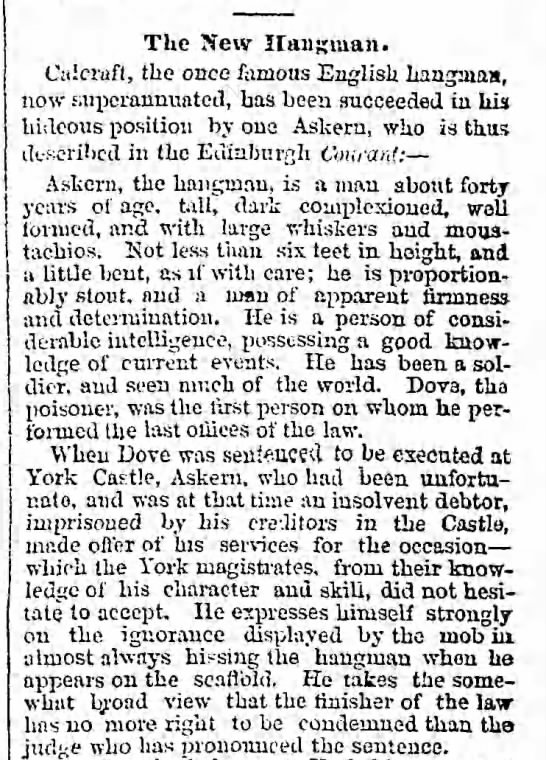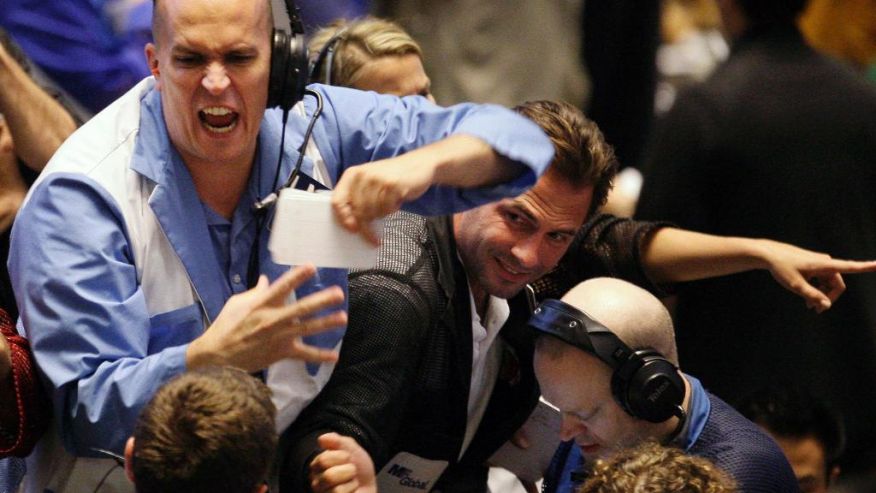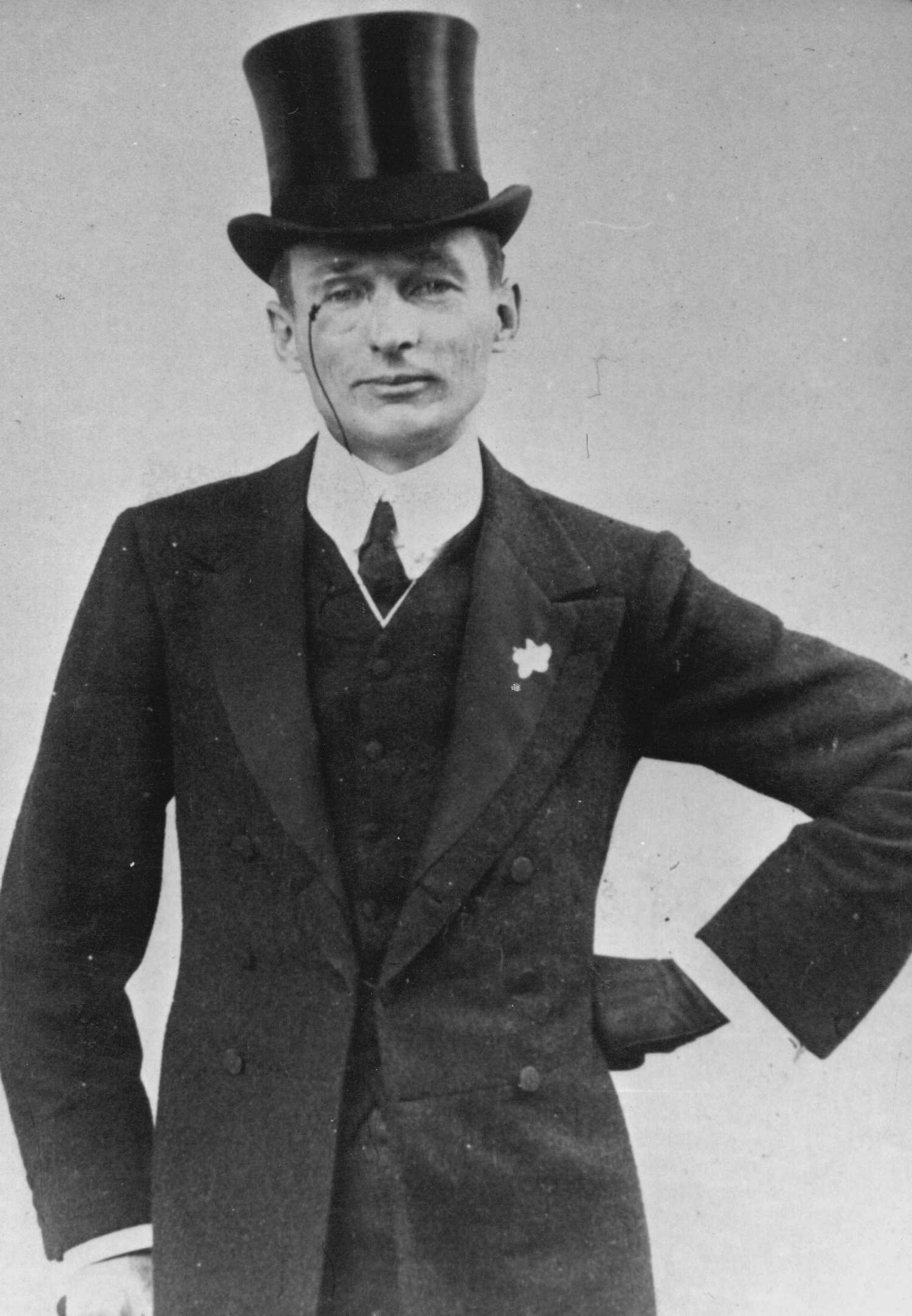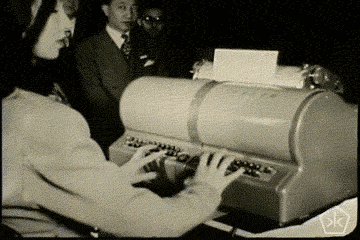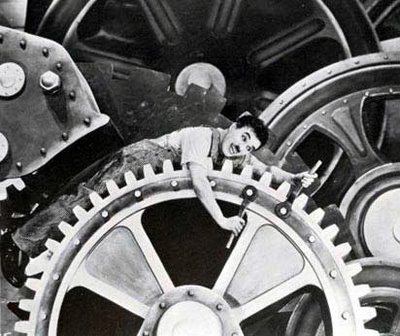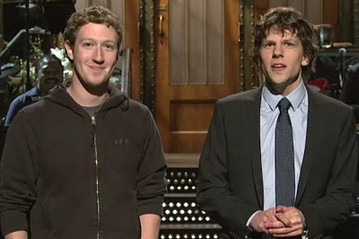From the August 2, 1864 Brooklyn Daily Eagle:
It might be unfair to label the late Steve Jobs or Jeff Bezos or Elon Musk as having sociopathic tendencies, but it’s pretty clear they’ve recused themselves from basic empathy, feeling liberated from politesse by their self-appointed mission of “transforming the world.”
I have a few books to finish before reading Ashlee Vance’s Musk bio, and I’m really looking forward to it. An Economist piece about the title takes Vance to task somewhat for what it feels is an effort to elide Elon’s elephantine ego, though it points to this dynamic as a sign of the times. An excerpt:
Another, more controversial quality that has helped Mr Musk and some of his peers to succeed is a certain lack of empathy. Mr Vance tries to play down Mr Musk’s brittleness, but it is hard to obscure. While dancing with his first wife on their wedding day, he told her, “I am the alpha in this relationship.” When Mary Beth Brown, his longtime assistant, asked for a pay rise, he said he wanted to see if he could do her job, and then fired her instead. Mr Vance concludes that Mr Musk is not on the Asperger’s spectrum, as some have suggested, but is “profoundly gifted”. Bent on saving humanity, he sometimes lacks the patience to deal with individual humans.
The most fascinating and at times frustrating relationship revealed by the book is in fact the one between biographer and subject. Several times Mr Vance compares Mr Musk to Tony Stark, the businessman who becomes “Iron Man” (of Marvel Comics fame). Mr Vance comes across as a “Musketeer”, someone who believes in Mr Musk’s power to reshape the world. Having waited 18 months for an interview he may have felt indebted for the access that was eventually granted. The reverential tone grates, but it also reflects this moment in the technology business, when celebrity entrepreneurs are riding high, and their big personalities and ambitions are seen as virtues. They will inevitably stumble, and some of their companies will suffer declines, but many will make a comeback, as heroes often do.•
Tags: Ashlee Vance, Elon Musk
Not only can death kill you, but it has all sorts of nasty side effects.
We’d do almost anything to avoid the end, even to just avoid thinking about it. That leaves us open to all sorts of manipulations that prey upon our justifiable fears. In a Financial Times piece about a trio of new books that study our uneasy relationship with mortality, Stephen Cave explains how the human need for infinite life can create a living hell. An excerpt:
To protect ourselves from the inevitable — or at least the thought of it — we need wholly different defences. According to what these authors christened “terror management theory”, these defences have two elements. First, we develop cultural world views that in some way promise “order, meaning, and permanence”. Second, we strive for self-esteem, which reassures us that we are doing what our cultural world view requires and so “enables each of us to believe we are enduring, significant beings rather than material creatures destined to be obliterated”.
An obvious example of a death-denying world view is Christianity. Founded on belief in Jesus’s resurrection from the dead, it promises eternal life for all believers. It is therefore no surprise that those prompted to contemplate mortality by these psychologists afterwards proved to be more inclined to believe in God, Jesus and the efficacy of prayer than the control group.
But religions are not the only world views promising some way of living on. Nationalism and similar mass movements offer continuation as part of a great whole. As Solomon, Greenberg and Pyszczynski vividly explain, the 20th century is replete with examples of more or less veiled immortality ideologies, from Nazism’s “thousand-year Reich” to the “eternal and indestructible” revolution of Chairman Mao in China. The toll taken by these movements shows that death denial can be a dangerous business. And indeed, as experimental evidence shows, fear of mortality makes people more attracted to charismatic leaders, more nationalistic, more aggressive and more suspicious of foreigners. We might therefore wonder what the daily diet of killings served up by news programmes is doing to our psyches.•
Tags: Stephen Cave
It’s the fifth anniversary of Kevin Kelly’s What Technology Wants, and it’s clearly a classic. The author probably would have gotten less grief over the book if he had titled it What Technology Can Do For Us Humans, but that would not have only been unwieldy, it would have been untrue.
In the passage below, Kelly compares the growth of a city–a technology in and of itself–with the development of other technologies, how they start in germinal form, becoming denser and richer as more brains join them. It’s the same for Manhattan and the microchip.
Of course, insta-cities in China and elsewhere are trying to flout this rule. Will any of them become great metropolises? Are they examples of a new technology or just mistakes doomed to failure?
The excerpt:
Every beautiful city begins as a slum. First it’s a seasonal camp, with all the freewheeling makeshift expediency. Creature comforts are scarce, squalor the norm. Hunters, scouts, traders, pioneers find a good place to stay for the night or two, and if their camp is deemed a desirable spot, it grows into an untidy village or uncomfortable fort or dismal official outpost with permanent buildings surrounded by temporary huts. If the location of the village favors growth, concentric rings of squatters aggregate until the village chaotically swells to a town. When a town prospers it acquires a center – civic or religious – and the edges of the city continue to expand in unplanned, ungovernable messiness. It doesn’t in what century or in which country; the teeming fringes of a city will shock and disturb the established residents. The eternal disdain for newcomers is as old as the first city. Romans complained of the tenements, shacks and huts at the edges of their town, which “were putrid, sodden and sagging.” Every so often Roman soldiers would raze a settlement of squatters, only to find it rebuilt or moved within weeks.
Babylon, London, and New York all had seamy ghettos of unwanted settlers erecting shoddy shelters with inadequate hygiene and engaging in dodgy dealings. Historian Bronislaw Geremek states that “slums constituted a large part of the urban landscape” of Paris in the Middle Ages. Even by the 1780s, when Paris was at is peak, nearly 20% of its residents did not have a “fixed abode” — that is they lived in shacks. In a familiar complaint about medieval French cities, a gentleman from that time noted: “Several families inhabit one house. A weaver’s family may be crowded into a single room, where they huddle around a fireplace.” That refrain is repeated throughout history. Manhattan was home to 20,000 squatters in self-made housing. Slab City alone, in Brooklyn (named after the use of planks stolen from lumber mills), contained 10,000 residents in its slum at its peak. In the New York slums “nine out of ten of the shanties have only one room, which does not average over twelve feet square, and this serves all the purposes of the family.”
San Francisco was built by squatters. As Rob Neuwirth recounts in his wonderful book Shadow Cities, one survey in 1855 estimated that “95 percent of the property holders in [San Francisco] city would not be able to produce a bona fide legal title to their land.” Squatters were everywhere, in the marshes, sand dunes, military bases. One eyewitness said, “Where there was a vacant piece of ground one day, the next saw it covered with half a dozen tents or shanties.” Philadelphia was largely settled by what local papers called “squatlers.” As late as 1940, one in five citizens in Shanghai was a squatter. Those one million squatters stayed and kept upgrading their slum so that within one generation their shantytown became one of the first twenty-first-century cities.
That’s how it works. This is how all technology works. A gadget begins as a junky prototype and then progresses to something that barely works. The ad hoc shelters in slums are upgraded over time, infrastructure is extended, and eventually makeshift services become official. What was once the home of poor hustlers becomes, over the span of generations, the home of rich hustlers. Propagating slums is what cities do, and living in slums is how cities grow. The majority of neighborhoods in almost every modern city are merely successful former slums. The squatter cities of today will become the blue-blood neighborhoods of tomorrow. This is already happening in Rio and Mumbai today.•
Tags: Kevin Kelly
It’s Uber CEO Travis Kalanick’s prerogative if he wishes to replace his drivers with autonomous cars in an attempt to make his company more profitable, but there’s something seriously wrong with the PR bullshit he’s currently peddling, making himself out to be a champion of the worker–even the military veteran. That’s never been the goal. Worse yet, some smart people seem fooled by the charade.
From Stephen Edelstein at Yahoo! Autos:
Tesla Motors is one of several automakers planning to put a self-driving car on sale sometime in the next few years, and it already seems to have at least one big fan.
This person isn’t a celebrity owner or safety advocate, but rather the CEO of preeminent ride-sharing company Uber.
If Tesla can build a fully-autonomous car by 2020, Uber CEO Travis Kalanick says his company would buy it. In fact, he’d buy every one Tesla builds.
Yes, all 500,000 electric cars Tesla expects to produce in that year, according to Forbes (via Charged EVs).
That boast comes not directly from Kalanick himself, but from Steve Jurvetson–an early Tesla investor and board member.
Jurvetson relayed what he claimed were Kalanick’s remarks at the recent Top 10 Tech Trends dinner, hosted by the Churchill Club.•
Announcing God’s death probably wasn’t a real consensus-builder back in the 19th century, so Friedrich Nietzsche was crucified in effigy by some newspapers when he died. This postmortem, originally published in the Springfield Republican and reprinted in the November 4, 1900 edition Brooklyn Daily Eagle, was a merciless takedown of the extremist philosopher.
If driverless cars improve to the point where they’re even just as good as human drivers, those jobs behind the wheels of buses, taxis, trucks, etc., may disappear in an avalanche. That’s because autonomous vehicles might already be a cost-effective alternative, according to a paper published by Jeffery Greenblatt and Samveg Saxena of the Lawrence Berkeley National Laboratory. From Jason Koebler at Vice Motherboard:
Here’s the math used by Greenblatt and Saxena to argue that even today’s expensive autonomous vehicle technology makes sense today.
“In New York City in 2005, only 24 percent of taxi fares went toward vehicle costs, with 57 percent going to drivers … driver income constitutes $97,600 per year, which could more than cover the incremental cost of autonomous vehicle technology [estimated at $150,000]. Even using current costs, if financed using identical model assumptions for vehicle capital, this would amount to $36,500 per year, 37 percent of New York City taxi driver income and 21 percent of total taxi fares. Therefore, autonomous taxis could replace current taxis at current autonomous vehicle costs and possibly even lower fares, providing an important early market niche.” [emphasis mine]
Greenblatt and Saxena suggest that, given those potential cost savings, if the technology matures to a point where it’s reliable, today’s taxi drivers don’t stand a chance. That is, of course, what taxi companies have been very much worried about as Uber makes inroads throughout the world.•
Every time a holiday rolls around, you know there’ll be photos of Taylor Swift, whomever is posing as her boyfriend at the moment, and a collection of aesthetically pleasing, ever-changing friends, frolicing like catalog models in coordinated clothes and accoutrements on a beach or in a pool, a cast of synchronized swimmers going for gold at the Polo Ralph Lauren Olympics. Accessories in the Instagram images can instantly become big sellers, and, in a sense, everything in the pictures is for sale.
It’s completely understandable that Swift would want to protect her real world, but the constant make-believe is disquieting. It’s not only that her relationships are arranged, but that her whole life is. She’s become both Martha Stewart and a lovely item from the Martha Stewart collection.
Paper catalogs have survived in the Digital Age, even thrived, by not selling products but by peddling lifestyle fantasies just as Swift does. It’s no longer about items but ideas. From “Why Shopping Catalogs Just Won’t Die,” by Justin Jones at the Daily Beast:
Why are retailers like Restoration Hardware, Williams-Sonoma, J. Crew, and Barney’s New York still using print publication as a viable shopping medium.
And why are they sending them to our mailbox and not our inbox?
“Catalogs are being geared more towards content over product. It’s very much about the styling and the lifestyle and the connection to the brand,” Bridget Johns, the Head of Customer Engagement at the in-store analytics companyRetail Next, told The Daily Beast.
“[Customers] look at catalogs as a magazine versus a shopping vehicle, which gives this very different experience from the one that you get online.”
More and more we see that retailers are revamping their catalogs, swapping out flimsy four-page throwaways with a few promotional discounts for mammoth, beautifully crafted, coffee table-worthy publications that rival the likes of your favorite high-profile glossy.
It’s lifestyle porn for the consumer. Brands are injecting their aesthetic and aspirational world directly into the minds of millions.•
Tags: Justin Jones, Taylor Swift
In a strong New York Times Book Review piece, George Packer surveys the common ground shared by disparate pundits Chris Hedges, a revolutionary on the Left, and the Libertarian-ish Charles Murray, who claims to love both meritocracy and Sarah Palin, go figure. In new titles by each author (here and here), Packer reads the dissatisfaction in America that wasn’t quelled by the evanescence of Occupy, the white-hot anger of the Tea Party or the Presidency of Barack Obama. At the root of this multi-ideological discontent is a stinging anti-government strain, powered by the belief that the system is rigged, if for different reasons. Packer, however, is left wanting by both books.
His opening:
A few years ago, it wasn’t hard to find Americans who thought a revolution was coming. At the depths of the recession, in hard-hit places like the North Carolina tobacco country or the exurbs of Tampa Bay, I met plenty of people who believed we were one power blackout or gas shortage away from civil unrest, political violence, even martial law. The feeling didn’t conform to strictly partisan lines, and the objects of wrath included bêtes noires of both the left and the right: banks, oil companies, federal and state governments, news media. At Zuccotti Park in Lower Manhattan, a Tea Party couple visiting from rural Virginia was surprised to find a patch of common ground with Occupiers — at least until the discussion turned to actual policies. The anger was populist, which is ideologically capacious. The enemy was bigness, feathering its own nest and conspiring against the little guy.
The revolution didn’t come — it never does in America, not since the first one, no matter how bad things get. The Tea Party reared up, only to be appropriated by billionaires and partly dissolved into the Republican Congress. Occupy Wall Street flashed across the sky and flared out, more a meme than a movement. I once asked a man in Tampa Bay — formerly middle class and owner of his own small business, he was without work, facing foreclosure and dying of cancer — why there was no mass movement of Americans in his situation. “Imagine getting up every day and not having a purpose,” he said. “You’re not working, your self-worth goes down the toilet. You don’t interact with people. You stay in your house. You don’t want to answer the phone. It isolates you.” He seemed to be saying that in America failure, like success, feels personal.
But the collective discontent hasn’t gone away — far from it.•
Tags: Charles Murray, Chris Hedges, George Packer
It’s just a few dozen positions at this point, a drop in the bucket, but the world is a little quieter as the Chicago open-outcry trading pits are (almost) completely closing, the transactions now handled electronically. It’s progress, for sure, but jobs are lost and perhaps something more. From Bernard Condon and Don Babwin at the Associated Press:
Since at least 1870, when the first octagonal pits were installed in Chicago, traders have been reading the “tone” of the crowd to sense where prices might be heading and feeling the “rush” when placing a big bet.
After more than 40 years of trading, George Gero knows all about the feel and thrill of the pits. But he is also familiar with wrenching change, and learning to adapt to it.
After fleeing from the Nazi’s in wartime Hungary, he came to New York, and found a home in the commodities pits downtown. And at 79, he’s still at it, marveling at how the computer allows him to find prices for gold and currencies around the world, no matter the time of day.
But Gero, a strategist at RBC Capital Markets, is not a complete fan of the new way. “It’s very cold … strictly numbers,” he says.
[Dan] Grant, the runner turned clerk who now oversees his own trading firm, says he has embraced change, too. But he mourns the loss of the kind of entry-level positions that gave kids without much education a chance to prove themselves, just as he did.
“The customer doesn’t have to call anyone to execute a trade,” he says.
[Dan] Sullivan, the broker, puts it bleakly.
“It’s kind of a slow death for people,” he says. “Maybe I am holding on to something that needs to go.”•
Tags: Bernard Condon, Dan Grant, Dan Sullivan, Don Babwin, George Gero
A high number of the Airbnb lodgings in NYC have proven to be illegal, apartments kept from the market by large landlords who aim to make more money than the market would bear, which squeezes supply and forces rental prices upwards. Further, traditional hoteliers complain that they must adhere to regulations that the so-called Sharing Economy doesn’t heed. The same situation seems to be true in Paris.
Airbnb, of course, also has its good side economically. Apart from landlord listings, there are real homes and rooms to be had for vacation at much lower cost than a full-on hotel experience. Travelers who couldn’t afford the latter would have been forced to stay put, so this new option puts money back into the system, not just with the accommodations but also due to ancillary expenses.
In a Stratechery post which stretches back in scope to the Industrial Revolution and the exodus from farms, Ben Thompson argues that the only problem with this new arrangement is the subterfuge of the landlord behavior, which he believes should be out in the open, that ultimately the Sharing Economy, for whatever bad it may bring, is the greater good. Okay, that might be true in the aggregate, but if the so-called Peer Economy coupled with automation disappears many jobs in the hotel industry, and if we see similar shifts in the taxi and trucking and manufacturing sectors, we’d better have some sort of political solution in place to deal with what could make the changeover from farm to factory seem relatively placid by comparison. No one should want to halt progress, but we should be able to quickly adapt to the challenges it brings, including technological unemployment. An excerpt:
A not insignificant number of cities are equally concerned about “home,” but in their view Airbnb is destroying them by incentivizing landlords to remove residences from the rental market and instead offer them full-time on Airbnb. Paris, for example, which is Airbnb’s biggest market, has in recent weeks conducted raids on unauthorized Airbnb listings. As the Wall Street Journal reports::
Paris officials say there are some 30,000 tourist apartments available for rent in the city — about 2% of the total number of units — with as many as two-thirds operating illegally. Airbnb says that it is a fringe issue on its platform; just 17% of hosts in Paris say they rent out apartments other than their primary residences. It isn’t clear how many of those might be doing so without city authorizations.
Some hotel owners and other activists argue that full-time tourism apartments likely account for more than that in revenue terms, however. “You can’t call this a sharing economy anymore,” said Laurent Duc, president of the French Hotel Federation. “This is an underground shadow economy.”
It’s this last sentence that really gets at why the entire debate around the “sharing” economy is so stilted: at the risk of relying too heavily on my own anecdotal experience, it seems clear that at least a sizable portion of Airbnb’s business is made up of apartments and houses dedicated to Airbnb. In other words, no one staying in these professionally cleaned listings, complete with fresh sheets, towels, and complimentary toiletries, is joining their hosts for coffee or tacos or to simply hang out, no matter how delightful Airbnb’s founding myth may be. It is, as the president of the French Hotel Federation said, “an underground shadow economy.” Why, though, should it be underground?•
Tags: C.J. Preston, Mrs. Anetta Preston
I took a NYC bus recently, an odd circumstance for a dedicated subway rider like myself, and it was a depressing experience in a way I didn’t anticipate. The stop at which I boarded was the culmination of an undercover sting operation, and those who hadn’t paid full fare along the line (just put small change in the box) or hopped on via the back door were loudly pointed out by plainclothes cops and herded off like murderers. There they were lined up and written tickets. A cursory glance at these “hardened criminals” showed them to be just sort of down-on-their luck working class people, who weren’t much different than anyone else on the bus, save a Metrocard or enough coins. I didn’t mind if my fare was subsidizing them, and it was tough seeing these struggling folks treated like perps just because they didn’t have enough money. It felt like they were mostly guilty of daring to be poor in New York City, of being on the losing end of a class war.
When Wall Street banks crashed the economy in 2008, those involved in the schemes weren’t pointed out and lined up. No tickets written. Perhaps that’s because they have enough money to avoid taking buses. Fact is, when you can hire lobbyists and buy politicians, you don’t have to really break the law to get what you want. You can have rules bent to your advantage so things that should be illegal are perfectly okay. That’s also class warfare, especially since such behavior had a direct impact on the fate of bus riders.
In a New York Times piece, Alan Feuer, who never disappoints, writes of a few super-rich people at least paying lip service to the problem of wealth inequality. His opening:
EARLIER this month, when the billionaire merchandising mogul Johann Rupert gave a speech at The Financial Times’ “luxury summit” in Monaco, he sounded more like a Marxist theoretician than someone who made his fortune selling Cartier diamonds and Montblanc pens. Appearing before a crowd of executives from Fendi and Ferrari, Mr. Rupert argued that it wasn’t right — or even good business — for “the 0.1 percent of the 0.1 percent” to raid the world’s spoils. “It’s unfair and it is not sustainable,” he said.
For several years now, populist politicians and liberal intellectuals have been inveighing against income inequality, an issue that is gaining traction among the broader body politic, as shown by a recent New York Times/CBS News poll that found that nearly 60 percent of American voters want their government to do more to reduce the gap between the rich and the poor. But in the last several months, this topic has been taken up by a different and unlikely group of advocates: a small but vocal band of billionaires.
In March, for instance, Paul Tudor Jones II, the private equity investor, gave a TED talk in which he proclaimed that the divide between the top 1 percent in the United States and the remainder of the country “cannot and will not persist.” Mr. Jones, who is thought to be worth nearly $5 billion, added that such divides have historically been resolved in one of three ways: taxes, wars or revolution.•
10 search-engine keyphrases bringing traffic to Afflictor this week:
- lawrence wright scientology
- alex gibney scientology
- astronaut’s wife rene carpenter life article
- blind rancher george spahn and charles manson
- los angeles photojournalist julian wasser
- arctic explorer harold mccracken
- donald trump smells like shit
- gary numan technology nightmare
- example of how benign neglect is beneficial
- sending infants through the mail

This week, Jim Carrey defended his insane anti-vaccination theories, saying he got his information from a highly trained medical professional.
- Old Print Articles: Mollie Fancher celebrates 50 years of being a bed-ridden clairvoyant (1916) + Robert Louis Stevenson dies on the Samoan Islands (1894).
- Recently posted on NYC’s Craigslist: My best guess is Dr. Phil or Hulk Hogan + The new Adam Sandler film is in pre-production.
- Claire Cain Miller argues against popular Silicon Valley cliches.
- Christopher Mims explains why this Internet bubble is different.
- Publishing on Facebook might, perhaps, be good for the New York Times.
- Mark Zuckerberg did an Ask Me Anything at Facebook.
- IBM and Google claim they’ve made progress with quantum computing.
- Dan Falk wonders whether Homo sapiens simply had to come to pass.
- Algorithms should obviate gerrymandering.
- Silicon Valley’s immigrant push may have dodgy motives.
- Zbigniew Brzezinski believes Russian and the U.S. are in a Cold War.
- Utrecht is experimenting with universal basic income.
- Regardless of machine progress, humans won’t become horses.
- A “citizen salary” might be a remedy to technological unemployment.
- Johannes Koponen suggests we need to own less stuff.
- Dubai is building a small office building with a 3D printer.
- Ian Leslie compares data analysis and human intuition.
- Ants can help us better assimilate the Information Age’s flood of data.
- Literary terror Scott Peck has published a new memoir.
- In the 1970s, the DataMagic Bowling Computer declared war on the pencil.
- The Happiness Industry wants to monitor and modify moods.
- The Financial Times presents its summer books list.
- A brief note from 1954 about a technophobe named Ray Bradbury.
- A brief note from 1910 about a true believer.
- This week’s Afflictor keyphrase searches.
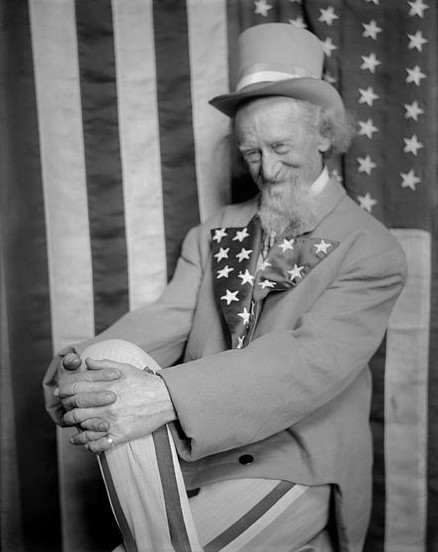


Today is a special day when Americans eat too much, drink too much and blow stuff up. That’s right, it’s Saturday.
Oh, and it’s also July 4th, the anniversary of when we began waxing those British father-rapers who were taxing us and then using that money to supply us with basic services we desperately needed. I mean, we would have died. Yes, it’s the birthday of the U.S.A., the greatest nation in the history of the world. If you forget that America is the best country ever, don’t worry, we’ll remind you. That’s because we’re large and wealthy yet deeply insecure, much like Alec Baldwin. Luckily, other countries are far worse than we are, so they can’t say shit. Yes, Turkmenistan, I’m looking at you. Suck it! And if you do talk trash about us, we’ll know right away because we’re listening in on all your private conversations. We can’t help it: Spying on you, sexy world, sends blood rushing to our boners.
Anyhow, enjoy a safe and happy holiday!
______________________________
“America the Beautiful,” by Meat Loaf and Mitt Romney.
My opinion may be influenced by living in NYC and knowing lots of media workers, but I believe most people are fucking miserable. And the majority never change, except to get worse. So while the implications of “mood surveillance” by corporations and governments are troubling, I don’t know that unhappiness is a problem that can be manipulated or weeded out.
That doesn’t mean there won’t be efforts to do so, though. Philip Matthews of Stuff.co.nz speaks to sociologist William Davies, author of The Happiness Industry, about the past, present and future of measuring and modifying our moods. An excerpt:
Davies asks, what does a happiness or well-being industry exist for, and who benefits from it? At times, it can resemble science-fiction or a culture of benign-seeming surveillance.
There is the wearable technology that could let managers see how stressed employees are, or how active, which has sinister potential. Could managers identify the less active or sociable sector of their workforce and find ways to remove them? They could come to similar conclusions by analysing keywords in emails and social media messages, and picking up patterns in metadata.
“While I give it a slightly sinister spin, there are people out there who think this is the future of business,” Davies says.
Measuring and then modifying the public mood could turn out to be relatively easy. There is the example of a literature festival in the UK that filmed the smiles of attendees, which were analysed by software and rated. It was described by as “the future of evaluation”.
There was the infamous Facebook experiment, in which the news feeds of nearly 700,000 users were manipulated for a week to test theories about “emotional contagion”. Some users saw more good news than usual and some saw more bad news, and Facebook found that the input had a small effect on the output. In other words, those whose feeds had been negative posted more negative comments themselves.
They have ways of making you happy. In the UK, “the science of emotion has been put to work as part of an austerity agenda that withdraws benefits from vulnerable populations”, Davies says.
It almost sounds like a perversion of motivational thinking.•
Tags: Philip Matthews, William Davies
The new Foreign Affairs issue on automation, which I’ve excerpted several times (here and here and here), would not have been complete without a piece by Andrew McAfee and Erik Brynjolfsson, authors of The Second Machine Age, an excellent book that asks all right questions about the rapid growth of robotics, trying to answer them as well.
In “Will Humans Go the Way of Horses?” the duo wisely points out that regardless of machine progress, we aren’t likely going to become our equine brothers. There’s some chance superintelligence might obliterate humans one day in the very long run, but interpersonal skills, common sense, political will and revolution are some of the tools the authors believe may slow or even mitigate the lower-case calamities on the horizon, keeping us from the stable or glue factory, even if we’re no longer the heart of production. An excerpt:
It’s possible, however, to imagine a “robot dividend” that created more widespread ownership of robots and similar technologies, or at least a portion of the financial benefits they generated. The state of Alaska provides a possible template: courtesy of the Alaska Permanent Fund, which was established in 1976, the great majority of the state’s residents receive a nontrivial amount of capital income every year. A portion of the state’s oil revenues is deposited into the fund, and each October, a dividend from it is given to each eligible resident. In 2014, this dividend was $1,884.
Even if human labor becomes far less necessary overall, people, unlike horses, can choose to prevent themselves from becoming economically irrelevant.
It’s important to note that the amendment to the Alaska state constitution establishing the Permanent Fund passed democratically, by a margin of two to one. That Alaskans chose to give themselves a bonus highlights another critical difference between humans and horses: in many countries today, humans can vote. In other words, people can influence economic outcomes, such as wages and incomes, through the democratic process. This can happen directly, through votes on amendments and referendums, or indirectly, through legislation passed by elected representatives. It is voters, not markets, who are picking the minimum wage, determining the legality of sharing-economy companies such as Uber and Airbnb, and settling many other economic issues.
In the future, it’s not unreasonable to expect people to vote for policies that will help them avoid the economic fate of the horse.•
Tags: Andrew McAfee, Erik Brynjolfsson
The MIT Technology Review has republished a piece of “Machinery and Unemployment,” Dugald C. Jackson’s 1933 article for that publication about workers displaced by technical progress. What was true then–new opportunities would replace those that vanished–may not be so now. And certainly Jackson’s remedy (businesses purposely not use machines to preserve some jobs) is completely at odds with this age. An excerpt:
In the United States, a highly mechanized nation, the proportion of the population ten years of age and older in gainful occupations has varied only six or seven per cent from its average figure during the 50 years from 1880 to 1930. Nevertheless, during the same time a large change occurred in the percentages employed in different occupations. The numbers of individuals gainfully occupied in trade, transportation, and clerical work expanded tremendously. Similar shifts have occurred in western Europe.
Employees of the more advanced ages and least mental skill are likely to be permanently displaced by such shifts. The uneducated and meager-minded man who is destitute is a continuing cost-burden to society; and it is a poor order of intellect which can look upon the poorhouse as a desirable haven for old age.
The only civilized cure is to prevent these changes from causing destitution. This may be done by placing responsibility on those commercial, industrial, or other profit-making activities favorably affected by the changes. Replacement of man-hours by machine-hours should be restrained unless the replacement enlarges net earnings sufficiently to provide a reasonable contribution for reestablishing the displaced employees’ status of living. Applying these principles would introduce a restraint upon the improper or socially unprofitable introduction of machinery.”•
Tags: Dugald C. Jackson
A few days ago, Mark Zuckerberg took a break from collecting your personal information and allowing you to create content for him for free, to answer some questions in a Facebook Q&A. Like most Silicon Valley successes, he likes meditating on the big questions. Stephen Hawking and Jeff Jarvis are among the questioners.
___________________________
Stephen Hawking:
I would like to know a unified theory of gravity and the other forces. Which of the big questions in science would you like to know the answer to and why?
Mark Zuckerberg:
That’s a pretty good one!
I’m most interested in questions about people. What will enable us to live forever? How do we cure all diseases? How does the brain work? How does learning work and how we can empower humans to learn a million times more?
I’m also curious about whether there is a fundamental mathematical law underlying human social relationships that governs the balance of who and what we all care about. I bet there is.
___________________________
Jeff Jarvis:
Mark: What do you think Facebook’s role is in news? I’m delighted to see Instant Articles and that it includes a business model to help support good journalism. What’s next?
Mark Zuckerberg:
People discover and read a lot of news content on Facebook, so we spend a lot of time making this experience as good as possible.
One of the biggest issues today is just that reading news is slow. If you’re using our mobile app and you tap on a photo, it typically loads immediately. But if you tap on a news link, since that content isn’t stored on Facebook and you have to download it from elsewhere, it can take 10+ seconds to load. People don’t want to wait that long, so a lot of people abandon news before it has loaded or just don’t even bother tapping on things in the first place, even if they wanted to read them.
That’s easy to solve, and we’re working on it with Instant Articles. When news is as fast as everything else on Facebook, people will naturally read a lot more news. That will be good for helping people be more informed about the world, and it will be good for the news ecosystem because it will deliver more traffic.
It’s important to keep in mind that Instant Articles isn’t a change we make by ourselves. We can release the format, but it will take a while for most publishers to adopt it. So when you ask about the “next thing”, it really is getting Instant Articles fully rolled out and making it the primary news experience people have.
___________________________
Ben Romberg:
Hi Mark, tell us more about the AI initiatives that Facebook are involved in.
Mark Zuckerberg:
Most of our AI research is focused on understanding the meaning of what people share.
For example, if you take a photo that has a friend in it, then we should make sure that friend sees it. If you take a photo of a dog or write a post about politics, we should understand that so we can show that post and help you connect to people who like dogs and politics.
In order to do this really well, our goal is to build AI systems that are better than humans at our primary senses: vision, listening, etc.
For vision, we’re building systems that can recognize everything that’s in an image or a video. This includes people, objects, scenes, etc. These systems need to understand the context of the images and videos as well as whatever is in them.
For listening and language, we’re focusing on translating speech to text, text between any languages, and also being able to answer any natural language question you ask.
This is a pretty basic overview. There’s a lot more we’re doing and I’m looking forward to sharing more soon.
___________________________
Jenni Moore:
Also in 10 years time what’s your view on the world where do you think we all will be from a technology perspective and social media?
Mark Zuckerberg:
In 10 years, I hope we’ve improved a lot of how the world connects. We’re doing a few big things:
First, we’re working on spreading internet access around the world through Internet.org. This is the most basic tool people need to get the benefits of the internet — jobs, education, communication, etc. Today, almost 2/3 of the world has no internet access. In the next 10 years, Internet.org has the potential to help connect hundreds of millions or billions of people who do not have access to the internet today.
As a side point, research has found that for every 10 people who gain access to the internet, about 1 person is raised out of poverty. So if we can connect the 4 billion people in the world who are unconnected, we can potentially raise 400 million people out of poverty. That’s perhaps one of the greatest things we can do in the world.
Second, we’re working on AI because we think more intelligent services will be much more useful for you to use. For example, if we had computers that could understand the meaning of the posts in News Feed and show you more things you’re interested in, that would be pretty amazing. Similarly, if we could build computers that could understand what’s in an image and could tell a blind person who otherwise couldn’t see that image, that would be pretty amazing as well. This is all within our reach and I hope we can deliver it in the next 10 years.
Third, we’re working on VR because I think it’s the next major computing and communication platform after phones. In the future we’ll probably still carry phones in our pockets, but I think we’ll also have glasses on our faces that can help us out throughout the day and give us the ability to share our experiences with those we love in completely immersive and new ways that aren’t possible today.
Those are just three of the things we’re working on for the next 10 years. I’m pretty excited about the future.•
Former Carter Administration National Security Advisor Zbigniew Brzezinski, whose daughter, Mika, is a liberal Margaret Dumont employed to prevent Joe “Gummo” Scarborough from being absolutely the dumbest person in the room, spoke to Sebastian Fischer and Holger Stark of Spiegel about the contretemps with Russia. Brzezinski’s technically correct in labeling the West’s stalemate with Russia a new Cold War, but let’s not use that term as if had the same meaning as it did during the Soviet days. Russia is still nuked-up, sure, and Ukraine is of great concern, but the pre-Glasnost standoff was a completely different order of magnitude. The opening:
Spiegel:
Mr. Brzezinski, are we seeing the beginning of a new Cold War between Russia and the US?
Zbigniew Brzezinski:
We are already in a Cold War. Whether it will become hot is fortunately still less than likely.
Spiegel:
The last Cold War lasted more than 40 years. Will it last that long this time around?
Zbigniew Brzezinski:
I don’t think so. Things move much more rapidly. Pressures from the outside are more felt internally. If this continues, and if Ukraine doesn’t collapse, domestic pressures in Russia will force whoever is in charge to explore alternatives. Hopefully, Putin is smart enough to know that it’s better to explore alternatives ahead of time and not too late.
Spiegel:
Is he smart enough?
Zbigniew Brzezinski:
That’s very hard to say. He has what’s called “smarts” in American, which is a kind of instinctive smartness. He has a real sophistication. I wonder why he’s almost deliberately antagonizing more than 40 million people in a country next door which, until very recently, were not driven by any hostility towards Russia.
Spiegel:
Do you think it is right for the US to send heavy weaponry to Eastern Europe and the Baltic states?
Zbigniew Brzezinski:
Do you think it is right to send troops and weapons into a sovereign country and start up a limited war after having seized a larger portion of it?
Spiegel:
You are talking about Russia’s actions in Ukraine.
Zbigniew Brzezinski:
You have to see both sides.•
Tags: Holger Stark, Sebastian Fischer, Vladimir Putin, Zbigniew Brzezinski
Every new medium or platform you work on has some effect on the content. The stage informs the play, the medium is still the message.
But the New York Times and the Wall Street Journal and other erstwhile print giants who’ve thus far survived the Digital Age have less-esoteric concerns when it comes to their partnering with Facebook and Google and the like. Will new media cannibalize their business models, further reducing their currency? Or is it at long last a path forward in not just an Internet world but a mobile one as well?
In a Financial Times piece, Matthew Garrahan and Hannah Kuchler explore the new abnormal, the joining of Zuckerbergs and Sulzbergers. An excerpt:
Given the industry’s bruising experiences, it is perhaps natural that publishers have greeted the new services with a mixture of fear and optimism. Mark Thompson, chief executive of The New York Times, points to the benefits of being able to provide its news content to a vast new audience. “We’re talking about an opportunity to distribute your content at no charge at all to well over 1bn people,” he says. “[Facebook] has a larger population than the People’s Republic of China.”
But there are concerns that Apple News and Facebook Instant Articles — which are not paying for the content — will chip away at the notion of a newspaper or magazine website as a standalone brand to be digested whole, rather than broken up into individual stories and scattered across different apps. The services could “dilute [publisher] brands as destination sites and . . . boost the platform brand”, says Gordon Crovitz, a media adviser and former publisher of the Wall Street Journal.
Publishers have also privately voiced concerns about the power Apple and Facebook will wield and the potential harm the new aggregation services could cause to paid subscription models. Apple has told publishers its service will eventually include subscription capability and, like Facebook, has told them they will be able to keep all the advertising revenue they generate. But neither company has ruled out changing this arrangement in the future.
Facebook and Apple have a shared aim: increasing the amount of time their users spend on their services, which are increasingly being accessed via smartphones. Smartphones have become the dominant way to read news: this year will mark the first time that smartphones were responsible for 50 per cent of news consumption, up from 25 per cent in 2012, according to Ken Doctor, an analyst with Newsonomics.
Driving Facebook and Apple’s interest in news “is the arrival of the smartphone as the primary access point for many readers”, he says. A publisher who has had negotiations with both companies puts it differently. Facebook and Apple have “finally woken up to the fact that news has value on mobile.”•
Tags: Hannah Kuchler, Ken Doctor, Mark Thompson, Matthew Garrahan
Quantum computing would change everything, of course, amplifying our potential for good and bad alike. Saying it would let us go from zero to sixty in a second doesn’t do it justice–it would be more like sixty million. But figuring out how to manage the anarchy inherent to such a system has long seemed a bridge too far.
In “The Computers of Our Wildest Dreams,” Adrienne Lafrance’s Atlantic article, engineers at IBM and Google claim we’re close to a tipping point. An excerpt:
We are at an analogous crossroads today, a moment in which seemingly incremental and highly technical changes to computing architecture could usher in a new way of thinking about what a computer is. This particular inflection point comes as quantum computing crosses a threshold from the theoretical to the physical.
Quantum computing promises processing speeds and heft that seem unimaginable by today’s standards. A working quantum computer—linked up to surveillance technology, let’s say—might be able to instantly identify a single individual in real-time by combing through a database that includes billions of faces. Such a computer might also be able to simulate a complex chemical reaction, or crack through the toughest encryption tools in existence. (There’s an entire field of study dedicated to post-quantum cryptography. It’s based on writing algorithms that could withstand an attack by a quantum computer. People still aren’t sure if such security is even possible, which means quantum computing could wreak havoc on global financial systems, governments, and other institutions.)
It’s often said that a working quantum computer would take days to solve a problem that a classical computer would take millions of years to sort through. Now, theoretical ideas about the development of such machines—long relegated to the realm of mathematical formula—are being turned into computer chips.
“As we started making these better controlled, engineered systems that do the physics as written down in the textbook, we start to engage more theorists and people who are more interested in these systems actually existing,” said Jerry Chow, the manager of the experimental quantum computing group at IBM. “It’s definitely exciting because we’re starting to really make systems which are of interest in terms of not only potential applications but also underlying physics.”•
Tags: Adrienne LaFrance, Jerry Chow


